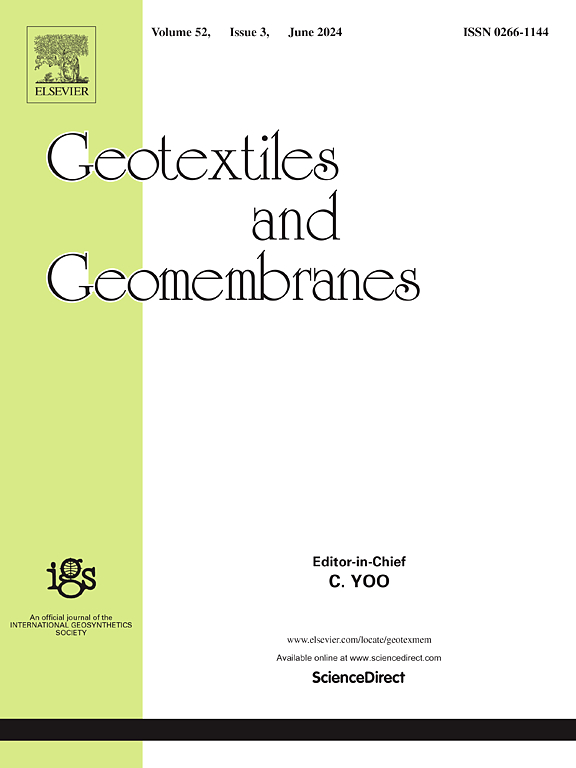Experimental investigation of the capillary drainage performance of multilayer wicking fabric
IF 6.2
1区 工程技术
Q1 ENGINEERING, GEOLOGICAL
引用次数: 0
Abstract
Excessive moisture within subgrade layers significantly diminishes subgrade stiffness and induces pavement deformation. A multilayer wicking fabric (WF) composed of deeply grooved fibers was developed to regulate moisture in unsaturated fine-grained soils. This study introduces a novel methodology for determining the water retention curve (WRC) over the full suction range. At the same time, an efficient method for predicting WF's WRC via NMR technology was pointed, and clarifying the material's microscopic drainage mechanisms. Building on this foundation, soil column drying experiments were conducted to verify WF's moisture regulation capacity in unsaturated fine-grained soils. The results demonstrate that WF exhibits its highest water retention under conditions of elevated matric suction. Additionally, soil column drying experiments reveal that WF incorporation significantly reduces average soil water content and accelerates drying rates. WF's drainage efficiency shows high sensitivity to initial water contents (wi) and evaporation segment length (L), with drainage performance increasing proportionally to these parameters. Moreover, soil water profiles are influenced by water retention capacity, capillary migration rate, and hydraulic gradient. These findings underscore the potential of multilayer wicking fabrics in managing moisture within fine-grained subgrades, presenting a novel and effective strategy for maintaining subgrade dryness and enhancing long-term stability.
多层排芯织物毛细排水性能的实验研究
路基层内水分过多会显著降低路基刚度,引起路面变形。研制了一种由深沟槽纤维组成的多层吸湿织物,用于非饱和细粒土的水分调节。本研究介绍了一种新的方法来确定全吸力范围内的水保持曲线(WRC)。同时,指出了利用核磁共振技术预测WF的WRC的有效方法,并阐明了材料的微观排水机理。在此基础上,进行了土柱干燥试验,验证了WF在非饱和细粒土中的调节水分能力。结果表明,在提高基质吸力的条件下,WF的保水率最高。此外,土壤柱干燥试验表明,WF掺入显著降低了土壤平均含水量,加快了干燥速度。WF排水效率对初始含水量(wi)和蒸发段长度(L)高度敏感,排水性能与这两个参数成正比增加。此外,土壤水分剖面受保水能力、毛管迁移速率和水力梯度的影响。这些发现强调了多层吸湿织物在细粒路基中控制水分的潜力,为保持路基干燥和提高长期稳定性提供了一种新颖有效的策略。
本文章由计算机程序翻译,如有差异,请以英文原文为准。
求助全文
约1分钟内获得全文
求助全文
来源期刊

Geotextiles and Geomembranes
地学-地球科学综合
CiteScore
9.50
自引率
21.20%
发文量
111
审稿时长
59 days
期刊介绍:
The range of products and their applications has expanded rapidly over the last decade with geotextiles and geomembranes being specified world wide. This rapid growth is paralleled by a virtual explosion of technology. Current reference books and even manufacturers' sponsored publications tend to date very quickly and the need for a vehicle to bring together and discuss the growing body of technology now available has become evident.
Geotextiles and Geomembranes fills this need and provides a forum for the dissemination of information amongst research workers, designers, users and manufacturers. By providing a growing fund of information the journal increases general awareness, prompts further research and assists in the establishment of international codes and regulations.
 求助内容:
求助内容: 应助结果提醒方式:
应助结果提醒方式:


